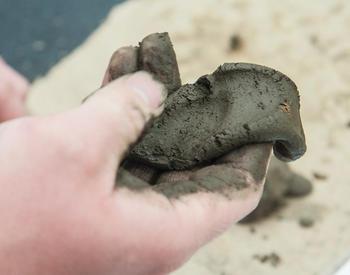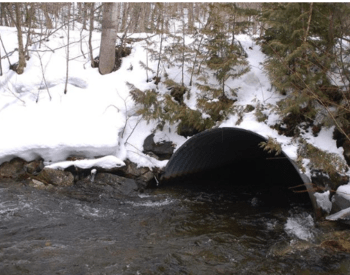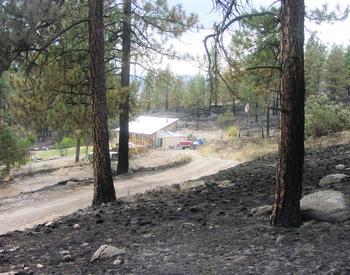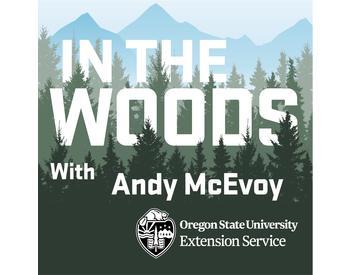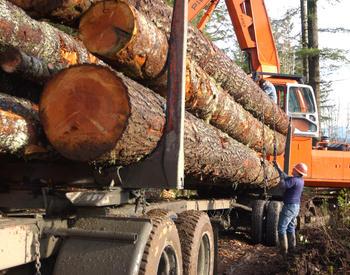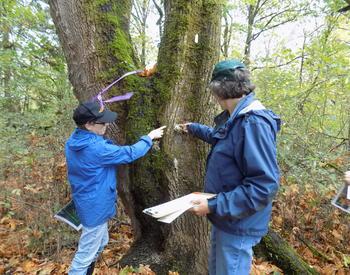Soil erosion following wildfire is a concern for many forest owners. In many instances, the site will recover on its own with minimal erosion. In other places where the fire burned more severely, some erosion-control treatments may be needed.
The potential for significant erosion is related to the severity of the burn, slope steepness, soil type, and the amount and duration of rainfall following the fire.
Fire severity classes
Wildfires burn at different intensity and can have varying effects on trees, plants and soil. Three fire-severity classes include:
Low severity
Most trees survive with scorch evidence. Most organic matter on soil top is intact and little consumption or charring of twigs and down logs is evident.
Moderate severity
Most trees have been killed or are severely scorched and retain most of their needles. Some organic matter on soil top is consumed. Twigs may be consumed and downed logs are deeply charred.
High severity
Nearly all trees are killed and have no needles. Nearly all organic matter, twigs and logs have been consumed and soil may be damaged or altered.
Soils after a fire
Forest soils are prone to erosion following severe wildfires. The tree canopy and protective organic layer covering the soil have been consumed, which help dampen and adsorb intense rainfall events. Severe heating can make the upper few inches of the soil “hydrophobic,” reducing infiltration and ability to adsorb rainfall. Instead of infiltrating, water moves across the soil surface displacing and transporting soil. The steeper the slope and the more intense the rainfall event, the greater the potential for significant soil movement and debris flows.
Mitigating erosion on your land
Survey your property and determine the amount of light, moderate or high-severity areas. Some areas may need some type of erosion control treatment, particularly if streams, roads or buildings are directly downslope from the burned area. Potential erosion controls:
Seeding grasses
Seeding of exotic annual and perennial grasses has been used in the past, but seeding provides little erosion control in the first year. Effectiveness generally increases as the plants become established. Seeding for erosion control is a marginal practice and is generally not recommended on forest sites.
Seeding of exotic grasses suppresses establishment of native plants, competes with planted tree seedlings and can increase fire hazard as grasses cure and dry out. Avoid seeding with non-native grasses.
When seeding, be aware seed may often wash down slope after heavy rains before it has had a chance to germinate and establish. Protective cover, such as mulch or some type of biodegradable fabric, may be needed to hold seed in place. In high-damage areas where there is little regrowth of native plants, seeding of native grasses and plants may be desirable.
Finding sufficient amounts of native grass seed from suppliers is difficult and the seed is expensive.
Mulching straw
Mulch applied at 1 to 2 tons per acre across the soil surface can protect soil from raindrop impact and may significantly reduce erosion. Straw mulch may contain weed seeds, however, that can germinate and may require future control. Rice straw, free of weed seed, is preferred.
Silt fences
They are constructed of landscape fabric held in place with wire and stakes. They need to be anchored and sealed to the ground to be effective. Placed in small swales, ephemeral drainages or along hill slopes, they provide temporary sediment storage. They work best on gentle slopes and where runoff and sediment are less concentrated.
Straw-bale check dams
These are placed in small swales and drainages to reduce sediment in streams during the first winter or rainy season. Bales need to be in full contact with soil, curved up and keyed into the banks and adequately staked. Their effectiveness decreases as they fill in after the first few storm events and usefulness is short-lived. They can blow out in large storms. Bales can contain noxious weed seeds, so monitoring and weed control may be necessary.
Contour log placement
This involves cutting burned trees and placing them along the contour of the slope to create an area behind the log for soil to settle. Logs 6 to 10 inches in diameter and 10 to 30 feet in length are typically used.
Logs need to be in full contact with the slope so that water and sediment do not run out beneath the log. This treatment is expensive, so target areas most prone to erosion.
Straw wattles
Straw wattles are long flexible tubes of straw, excelsior or other material held together with plastic netting. Apply in the same manner as contour log placement.
For information and assistance with erosion control measures, contact your local Natural Resource Conservation Service or Soil and Water Conservation District.





